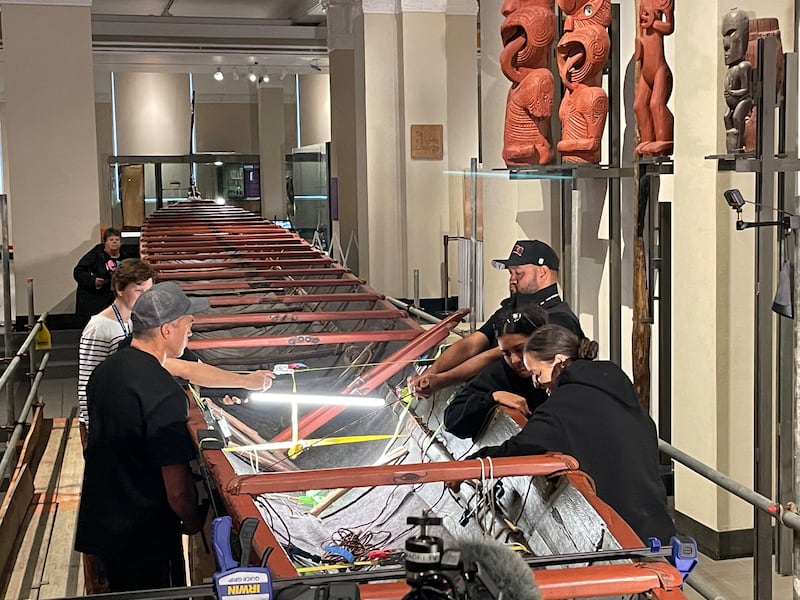The historic waka which sits at the heart of Tāmaki Paenga Hira / Auckland War Memorial Museum will have its lashings and bindings replaced by tauira and waka builders over the coming weeks.
Te Toki-a-Tāpiri, currently housed in Te Marae Ātea Māori Court, has been with the museum since 1885, and is one of the last remaining traditional waka taua (war canoes) from that century.
Expected to take no more than a month, the re-lashing has brought five iwi together, which will occur out in the open for all museum attendees to see.
“The revitalisation is about binding them together, the museum and five iwi that are part of the history and trajectory of Te Toki a Tāpiri,” Head of Collection Care Vasiti Palavi said.
“We want to uplift and elevate the mauri of this significant taonga tuku iho that has a beautiful history for Aotearoa..”
Tui Tui Tuia is the name behind the two-year project with five iwi connected to Te Toki a Tāpiri: Ngāti Matawhaiti, Rongowhakaata, Ngāpuhi, Ngāti Te Ata and Ngāti Whātua Ōrakei.
She said raranga (weavers) from each of the five iwi were asked to produce 400 metres of muka taura (cord) to make up 2,000 metres towards the re-lashing.
“It’s a significant undertaking. They meticulously and beautifully with hard work have created this muka taura for a moment in time so that it’s there for their mokopuna and it’s for their uri and future generations.
“We’ve completed that and so I’m really proud to be holding a part of that muka taura that has been brought together from all five iwi.”

“We’ve got Te Tapuwae o Te Waka crew here to help us with [revitalisation] and so we’re just starting that off now and it’s a beautiful moment to kind of showcase matauranga Māori in a museum context.”
Palavi called the process an opportunity to share and display the work that has gone into conserving and revitalising the waka.


